Fecal microbiota transplantation attenuates Alzheimer's disease symptoms in APP/PS1 transgenic mice via inhibition of the TLR4-MyD88-NF-κB signaling pathway-mediated inflammation
- PMID: 39780269
- PMCID: PMC11715513
- DOI: 10.1186/s12993-024-00265-8
Fecal microbiota transplantation attenuates Alzheimer's disease symptoms in APP/PS1 transgenic mice via inhibition of the TLR4-MyD88-NF-κB signaling pathway-mediated inflammation
Abstract
Alzheimer's disease (AD) is a prevalent and progressive neurodegenerative disorder that is the leading cause of dementia. The underlying mechanisms of AD have not yet been completely explored. Neuroinflammation, an inflammatory response mediated by certain mediators, has been exhibited to play a crucial role in the pathogenesis of AD. Additionally, disruption of the gut microbiota has been found to be associated with AD, and fecal microbiota transplantation (FMT) has emerged as a potential therapeutic approach. However, the precise mechanism of FMT in the treatment of AD remains elusive. In this study, FMT was performed by transplanting fecal microbiota from healthy wild-type mice into APP/PS1 mice (APPswe, PSEN1dE9) to assess the effectiveness of FMT in mitigating AD-associated inflammation and to reveal its precise mechanism of action. The results demonstrated that FMT treatment improved cognitive function and reduced the expression levels of inflammatory factors by regulating the TLR4/MyD88/NF-κB signaling pathway in mice, which was accompanied by the restoration of gut microbial dysbiosis. These findings suggest that FMT has the potential to ameliorate AD symptoms and delay the disease progression in APP/PS1 mice.
Keywords: Alzheimer’s disease; Fecal microbiota transplantation; Inflammation; Intestinal microbiota; Microbiota-gut-brain axis; Short-chain fatty acids.
© 2025. The Author(s).
Conflict of interest statement
Declarations. Ethical approval and consent to participate: All animal protocols were approved by the Experimental Animal Ethics Committee of Wenzhou Medical University (Approval No. wydy2022-0375). Competing interests: The authors declare no competing interests.
Figures
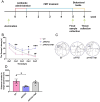

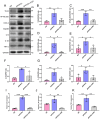
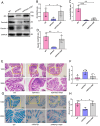


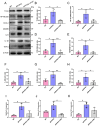

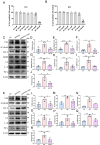
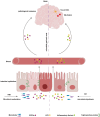
Similar articles
-
Fecal Microbiota Transplantation Improves Cognitive Function of a Mouse Model of Alzheimer's Disease.CNS Neurosci Ther. 2025 Feb;31(2):e70259. doi: 10.1111/cns.70259. CNS Neurosci Ther. 2025. PMID: 39957504 Free PMC article.
-
Fecal microbiota transplantation alleviated Alzheimer's disease-like pathogenesis in APP/PS1 transgenic mice.Transl Psychiatry. 2019 Aug 5;9(1):189. doi: 10.1038/s41398-019-0525-3. Transl Psychiatry. 2019. PMID: 31383855 Free PMC article.
-
Fecal microbiota transplantation protects rotenone-induced Parkinson's disease mice via suppressing inflammation mediated by the lipopolysaccharide-TLR4 signaling pathway through the microbiota-gut-brain axis.Microbiome. 2021 Nov 17;9(1):226. doi: 10.1186/s40168-021-01107-9. Microbiome. 2021. PMID: 34784980 Free PMC article.
-
Gut Microbiome in Alzheimer's Disease: from Mice to Humans.Curr Neuropharmacol. 2024;22(14):2314-2329. doi: 10.2174/1570159X22666240308090741. Curr Neuropharmacol. 2024. PMID: 39403057 Free PMC article. Review.
-
Role of gut-brain axis, gut microbial composition, and probiotic intervention in Alzheimer's disease.Life Sci. 2021 Jan 1;264:118627. doi: 10.1016/j.lfs.2020.118627. Epub 2020 Oct 22. Life Sci. 2021. PMID: 33169684 Review.
Cited by
-
Multimodal Interventions Targeting Gut Microbiota and Microbial Metabolites in Cognitive Impairment.Cureus. 2025 Jun 10;17(6):e85688. doi: 10.7759/cureus.85688. eCollection 2025 Jun. Cureus. 2025. PMID: 40642664 Free PMC article. Review.
-
Interplay of gut microbiota in Kawasaki disease: role of gut microbiota and potential treatment strategies.Future Microbiol. 2025 Mar;20(4):357-369. doi: 10.1080/17460913.2025.2469432. Epub 2025 Feb 27. Future Microbiol. 2025. PMID: 40013895 Review.
-
Age- and Sex-Specific Gut Microbiota Signatures Associated with Dementia-Related Brain Pathologies: An LEfSe-Based Metagenomic Study.Brain Sci. 2025 Jun 5;15(6):611. doi: 10.3390/brainsci15060611. Brain Sci. 2025. PMID: 40563782 Free PMC article.
-
Bidirectional modulation of Alzheimer's disease via gut microbiota: rescue by fecal transplantation from healthy donors and aggravation by colitis-associated dysbiosis.Front Neurosci. 2025 May 23;19:1593854. doi: 10.3389/fnins.2025.1593854. eCollection 2025. Front Neurosci. 2025. PMID: 40486731 Free PMC article.
References
-
- McKhann GM, Knopman DS, Chertkow H, Hyman BT, Jack CR Jr., Kawas CH, et al. The diagnosis of dementia due to Alzheimer’s disease: recommendations from the National Institute on Aging-Alzheimer’s Association workgroups on diagnostic guidelines for Alzheimer’s disease. Alzheimers Dement. 2011;7:263–9. - PMC - PubMed
MeSH terms
Substances
Grants and funding
LinkOut - more resources
Full Text Sources
Medical

